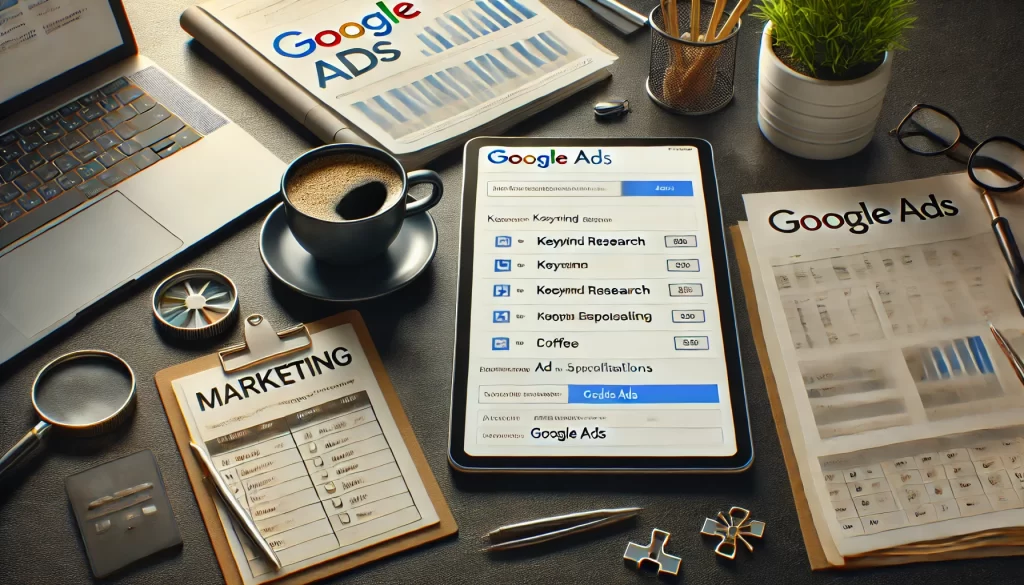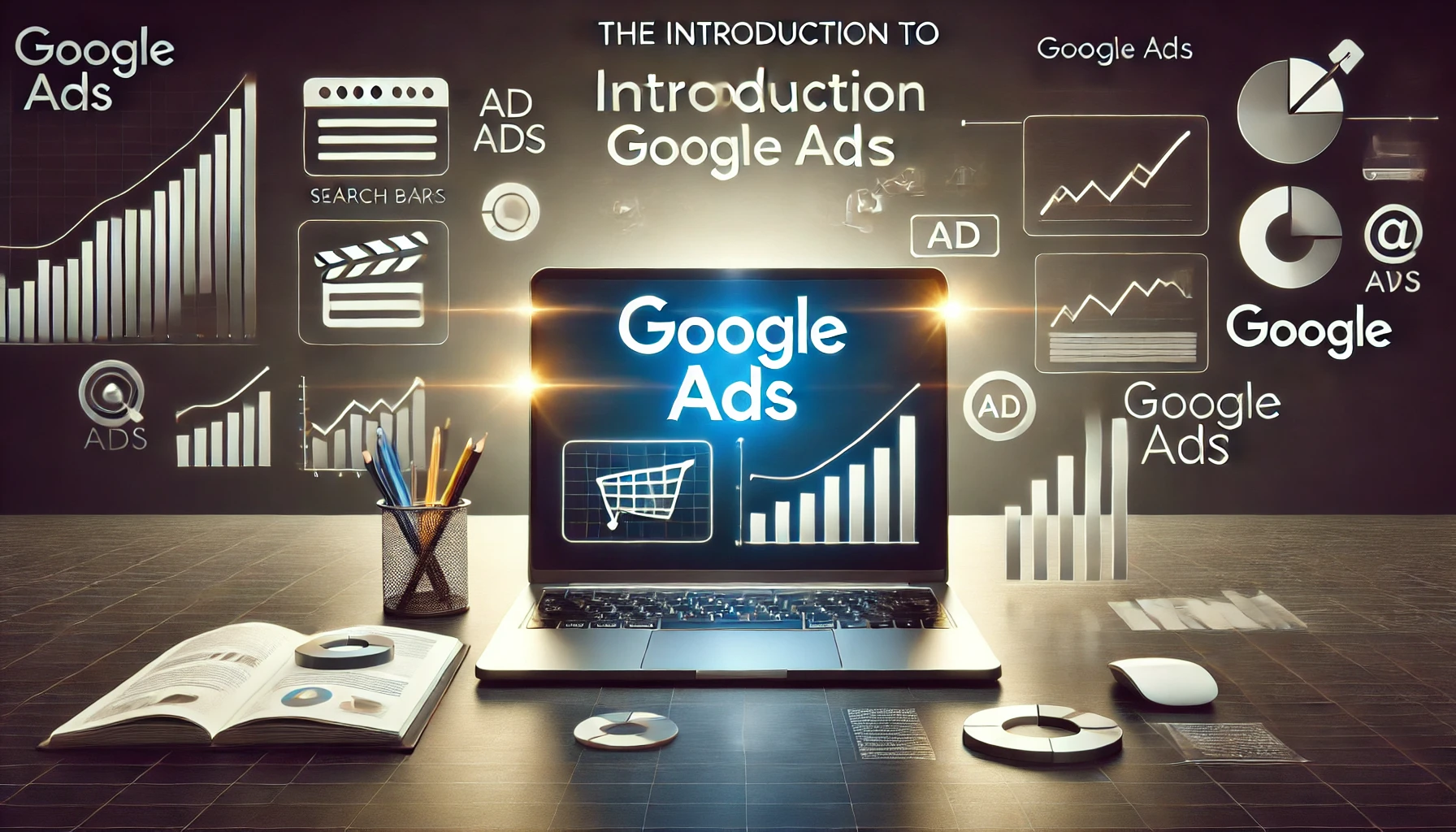Introduction
Google Ads is one of the most powerful advertising platforms available to businesses today. With billions of searches made daily, it offers unparalleled access to a global audience. However, creating successful Google Ads campaigns goes beyond just selecting keywords and targeting options. The specifications of your ads such as their copy, sizes, and images play a pivotal role in their effectiveness. We’ll dive deep into Google Ads specifications, discussing ad copy templates, standard image dimensions, the requirements for responsive display ads, and more. By understanding and using the correct specifications, you can ensure that your Google Ads campaigns run smoothly, look professional, and achieve the best results.

Google Ads Copy Template
The copy you use in your Google Ads is crucial to attracting the right audience. A well-structured ad can help your business stand out, generate clicks, and drive conversions. To make the most of your advertising efforts, it’s important to follow best practices when crafting your ad copy.
What is a Google Ads Copy Template?
A Google Ads copy template is a structured format that outlines the key components of your ad, helping you create compelling, targeted ads that align with Google’s specifications. It ensures that your ads include all the necessary information, such as headlines, descriptions, and calls to action while keeping your message concise and clear.
How to Use It for Ad Creation?
Using a Google Ads copy template is straightforward. Start by filling in the essential elements:
- Headline: This is the most important part of your ad. Google allows up to three headlines, each with a 30-character limit. Your headline should be concise and directly address the user’s needs or interests.
- Description: You have up to two description lines with a 90-character limit. Use this space to elaborate on the benefits of your product or service and encourage users to click.
- Call-to-Action (CTA): Include a strong CTA that tells users what action to take next, such as “Call Now,” “Learn More,” or “Shop Now.”
- Display URL: Your display URL should be clean, relevant to your landing page, and free from unnecessary characters.
By using a copy template, you ensure that your ads are optimized for Google’s character limits and provide the right message most effectively.
Key Elements to Include in an Ad Copy
- Relevance: Ensure that your ad copy is directly related to the keyword you are targeting.
- Urgency: Use action-oriented words and time-sensitive phrases to create a sense of urgency.
- Unique Selling Proposition (USP): Highlight what sets your business apart from the competition. What value can you offer your potential customers?
- Proof: Incorporate trust-building elements, such as awards, certifications, or customer reviews, if applicable.

Google Ads Sizes & Dimensions
Ad sizes and dimensions are critical for ensuring that your ads display properly across different devices and networks. Google Ads supports several ad types, each with its size requirements. Below are the most common ad sizes you should be aware of when creating your campaigns.
Overview of Common Ad Sizes (Desktop vs Mobile)
Google Ads supports both desktop and mobile formats, and each has its own set of dimensions. Mobile ads tend to be smaller and more concise, while desktop ads can utilize larger banners or display ads.
Standard Display Ad Sizes
Here are the standard sizes for display ads:
- Medium Rectangle (300×250): This is one of the most popular ad sizes for both desktop and mobile.
- Leaderboard (728×90): A horizontal banner typically used in desktop websites.
- Large Rectangle (336×280): A larger version of the medium rectangle ad, providing more space for visuals and text.
- Wide Skyscraper (160×600): A vertical ad format typically used in sidebars.
- Mobile Banner (320×50): Specifically designed for mobile devices, this size works well on smaller screens.
Image Size Requirements
Images play a huge role in your Google Ads, particularly for display ads. It’s important to upload high-quality, well-optimized images to ensure they look professional and load quickly. Google recommends the following image sizes:
- Square Image (1:1 ratio): 1200 x 1200 pixels.
- Landscape Image (4:3 ratio): 1200 x 628 pixels.
These sizes are ideal for ensuring your images appear correctly across various devices and platforms.
Dimensions for Various Google Ads Formats (Banner, Responsive, etc.)
- Banner Ads: Typically come in sizes like 468×60, 728×90, and 300×250, though these can vary based on the platform.
- Responsive Display Ads: These ads automatically adjust to fit various screen sizes, so there’s more flexibility with dimensions. However, it’s crucial to use high-quality images with the correct aspect ratios (16:9 or 4:3).
Google Ads Image Specifications
Images are essential to making your ads visually appealing and engaging. For display ads, the quality and size of your images can significantly impact their performance.
Image Dimensions and Formats (JPG, PNG, etc.)
Google Ads supports several image formats for display ads:
- JPG: Ideal for high-quality images with a small file size.
- PNG: Best for images with transparent backgrounds.
- GIF: Suitable for simple animated images.
The recommended image dimensions for display ads are typically 1200 x 1200 pixels for square ads and 1200 x 628 pixels for landscape ads.
Image Aspect Ratios and Pixel Requirements for Display Ads
- Aspect Ratio: A 1:1 aspect ratio (square) or 16:9 aspect ratio (landscape) is optimal for display ads.
- Pixel Requirements: For the best quality, use images that are at least 1200 pixels wide. This ensures that your ads display clearly on both mobile and desktop devices.
Responsive Display Ads Specifications
Responsive display ads are a flexible, dynamic format that automatically adjusts to fit various screen sizes and placements. These ads are especially useful if you want to reach users on both desktop and mobile devices without creating multiple ad variations.
What Makes Responsive Display Ads Unique?
Unlike traditional display ads, responsive display ads allow you to upload multiple assets (such as images, logos, headlines, and descriptions), and Google will automatically create different combinations and sizes to fit available ad spaces. This allows your ads to reach a broader audience and appear in more places across the Google network.
Size and Content Flexibility of Responsive Ads
Responsive display ads offer flexibility in both size and content. The ad can resize based on the device it’s viewed on, and the content is adapted to match the size requirements of the ad space.
Best Practices for Responsive Display Ads
- Use Multiple Assets: Upload several versions of your images and headlines to give Google more combinations to work with.
- Keep Your Text Concise: Short, clear headlines work best in responsive ads. Focus on getting your message across quickly.
- Optimize for All Devices: Ensure that your assets are mobile-friendly, as a significant portion of display ad traffic comes from mobile devices.
Key Takeaways
Creating effective Google Ads requires attention to detail, particularly when it comes to ad specifications. Understanding the various ad sizes, dimensions, and image requirements is crucial to ensuring your ads are displayed correctly and perform optimally. By following the right specifications and using best practices, you can create ads that attract the right audience and drive more conversions.
Remember to continuously monitor your ads and adjust them based on performance data. With the right strategy and specifications in place, your Google Ads campaigns will be set up for success.
Google Ads specifications are critical for ensuring your ads are effective, visually appealing, and properly displayed. By understanding ad copy templates, image dimensions, and responsive ad requirements, you can optimize your campaigns for maximum success.
- Ad Copy Structure: Follow templates to ensure your ad copy fits within Google’s guidelines and engages users effectively.
- Ad Size and Image Specifications: Use the recommended sizes and formats for both images and text to avoid display issues.
- Responsive Ads: Take advantage of responsive display ads for flexible, mobile-friendly campaigns.
- Best Practices: Test, monitor, and adjust your ads for optimal performance, ensuring your campaigns are continually refined.
FAQs
What is the ideal size for Google Ads?
The ideal size depends on the type of ad you’re running. For display ads, common sizes include 300×250 (medium rectangle) and 728×90 (leaderboard).
What image formats can I use in Google Ads?
You can use JPG, PNG, and GIF formats for Google Ads. JPG is best for high-quality, small file sizes, while PNG is ideal for transparent images.
How do responsive display ads differ from traditional display ads?
Responsive display ads automatically adjust to fit various screen sizes and placements, making them more flexible and suitable for both mobile and desktop users.
How do I make sure my images meet Google Ads specifications?
Ensure that your images are the recommended size (1200 x 1200 for square and 1200 x 628 for landscape) and have the proper aspect ratio (1:1 or 16:9). Avoid pixelation by using high-quality images.
Can I create Google Ads without a designer?
Yes! With Google Ads’ ad creation tools and templates, you can easily design ads without needing any graphic design experience.
